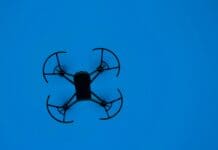This post is also available in:
 עברית (Hebrew)
עברית (Hebrew)
A known and existing method of non-invasive health monitoring is through our sweat, which contains biomarkers that can detect various health conditions from diabetes to genetic disorders. However, although it is non-invasive, it requires intense physical activity to obtain sufficient nutrients or hormones for testing, which can be a challenge for some, like elderly people, infants and babies, and people with mobility difficulties.
Scientists from the Korea Institute of Science and Technology and Northwestern University in the US recently announced they have developed a small, soft innovative sweat monitoring device that can be easily attached to the skin and deliver drugs to stimulate sweat glands, providing a more convenient approach to monitoring sweat without the need for exercise. The sweat is then collected in microfluidic channels within the device and analyzed for biomarkers using biosensors.
According to Interesting Engineering, the device was tested and showed results consistent with traditional hospital analysis methods, showing an accuracy of over 98%. This approach reduces the need for hospital visits and minimizes the risk of biomarker contamination during testing, increasing accuracy. It also contributes to the advancement of non-invasive disease monitoring technology based on sweat in healthy adults.
Furthermore, this innovative technology for delivering drugs through the skin can be further utilized to enhance the delivery rate of drugs to localized areas (for example, in cases when needing to treat skin conditions or wounds) and significantly shorten the recovery time.
Dr. Kim Joohee from the Bionics Research Center at the Korea Institute of Science and Technology stated: “Through two years of collaborative research with Northwestern University, we have overcome the limitations of existing methods for inducing sweat and achieved success in clinical research, bringing us closer to commercialization.”
“We plan to conduct large-scale clinical studies and move towards commercialization, including applications for adults, in the near future,” added Northwestern University Professor John A. Rogers.
This information was provided by Interesting Engineering.


























